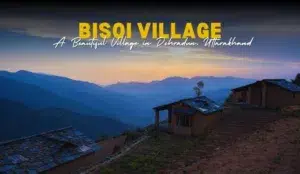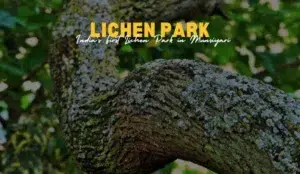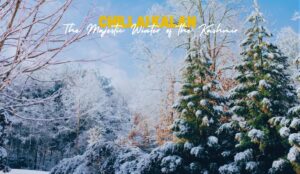Welcome to our guide on Bisu Mela, one of the most colorful and traditional festivals celebrated in the Jaunsari villages of Chakrata, Uttarakhand. Held every year during the harvest season, this festival brings together local people, music, dance, and rituals that have been followed for generations. Bisu Mela is not just a fair—it’s a beautiful way to see the culture and spirit of the Jaunsari community. In this blog, we’ll introduce you to the heart of this festival, its cultural roots, and how you can plan a visit to be part of this lively celebration.
About Bisu Mela
Bisu Mela (also spelled Bissu) is the famed Jaunsari tribal fair held during the spring harvest season, usually in Chaitra (March/April). Over a week, villagers gather at Chakrata’s community grounds to offer thanks for the harvest, celebrate the season, and connect with their roots.
The name “Bisu” marks fertility and new beginnings, similar in spirit to festivals like Bihu (Assam) and Vishu (Kerala).
When and Where Is Bisu Mela Celebrated
Festival Timing
Bisu Mela takes place every year in the month of Chaitra, during the Shukla Paksha (the bright half of the lunar month). This usually falls in early April, around the same time as Baisakhi, another popular harvest festival in North India. The dates can change each year based on the Hindu calendar.
Main Location
The heart of the celebration is at Jhandha Ground, just 3 km from Chakrata town, in the Dehradun district of Uttarakhand. This open ground becomes the main gathering place where villagers and tourists come together for prayers, performances, and fair activities. Nearby, you’ll also find the Santoora Devi Temple, where many festival rituals take place.
How to Reach Bisu Mela
Bisu Mela is held in Chakrata, a small hill town in Uttarakhand, around 90 km from Dehradun.
1. By Air
The nearest airport is Jolly Grant Airport, Dehradun. From there, you can take a taxi or bus to Chakrata. It takes about 4 to 5 hours.
2. By Train
The closest railway station is Dehradun. After reaching the station, you can take a bus or a taxi to Chakrata.
3. By Road
-
From Dehradun: You can take a taxi or bus via Vikasnagar and Kalsi.
-
From Delhi: Chakrata is about 320 km away. You can drive or take an overnight bus.
Mela Location
The mela happens at Jhandha Ground, which is about 3 km from Chakrata market. You can walk or take a local cab to reach the place.
Best Time to Visit Bisu Mela
Bisu Mela usually lasts for 5 to 7 days, starting in the month of Chaitra (early April), around the time of Baisakhi.
While the festival goes on for several days, the best time to visit is on the first day. This is when the main rituals, flower offerings, traditional dances, and prayers take place. The opening day has the most energy, with villagers dressed in their finest clothes and the full community gathering together.
The following days are more relaxed, with cultural programs, food stalls, and games. If you want to see the true spirit and traditions of Bisu Mela, plan your visit at the very beginning of the celebration.
Bisu Mela – Meaning, History and Legends
Bisu Mela is a traditional harvest festival celebrated by the Jaunsari tribe in the Chakrata region of Uttarakhand. It usually takes place in early April, during the month of Chaitra in the Hindu calendar. The word “Bisu” means new beginning or harvest, and the mela (fair) marks the start of a fresh season after the winter months.
This festival is a way for local people to thank nature for a good crop and to pray for peace, health, and happiness in the coming year. It is a time of joy, where the entire community comes together to sing, dance, offer prayers, and celebrate the bond between people and nature.
1. The History Behind Bisu Mela
Bisu Mela is not a new festival. It has been celebrated for hundreds of years, passed down from one generation to another. The exact year it started is not recorded, but it is deeply rooted in the ancient customs of the Jaunsari people, who are believed to be descendants of the Pandavas from the Mahabharata.
2. A Local Legend Behind the Festival
According to local stories, the Pandavas once traveled through this region during their time in exile. They were welcomed by the local people and blessed the land. Ever since, the Jaunsaris consider themselves part of the Pandava lineage. Many believe that the Bisu Mela rituals—like folk dances with swords and offerings to deities—are inspired by the warrior traditions of the Pandavas.
This connection to ancient mythology gives the festival a spiritual meaning. It is not just a celebration of crops, but also of ancestral pride, bravery, and faith.
How Bisu Mela Is Celebrated – Rituals, Culture and Local Life
Bisu Mela is full of color, tradition, and joy. It is not just a fair—it is a spiritual and cultural celebration where the Jaunsari community comes together to honor their land, their gods, and their heritage. Here’s what you’ll experience when you visit:
1. Rhododendron Offerings
One of the most special parts of the festival is the offering of rhododendron flowers, known locally as Buransh. These bright red flowers are picked fresh from nearby forests and offered to the local deities. People walk together in processions to temples like Santoora Devi, carrying flowers, singing songs, and praying for health and happiness. The flower represents purity and new beginnings, and offering it is a way to thank nature for a good harvest.
2. Folk Music and Traditional Dance
The whole village comes alive with folk music and group dances. Local men and women dress in Jaunsari traditional clothes—bright dresses, jewelry, and turbans—and perform cultural dances like Harul, Raso, and Jangbazi. These dances are performed in circles or lines, often with singing and the beats of traditional instruments like the Dhol and Damau. Visitors are also invited to join in, making it a fun and shared experience.
3. Weapon Rituals & Warrior Traditions
One unique feature of Bisu Mela is the display of ancestral martial arts. Young men take part in bow-and-arrow competitions, and mock battles are held to honor the warrior spirit of the Jaunsari ancestors. These rituals connect the people with their past, especially their links to the Pandavas of the Mahabharata. It is both exciting and symbolic—a reminder of courage and community protection.
The Jaunsari People and Lifestyle
The Jaunsari tribe lives in the Jaunsar-Bawar region near Chakrata, Uttarakhand. They are known for their rich culture, old traditions, and strong community values.
Their houses are made in the Kath-Kuni style, using wood and stone, designed for mountain life. Music and dance play a big role in their culture, especially folk dances like Harul and Jangbazi, which are performed during festivals.
The Jaunsaris deeply worship Mahasu Devta, their main deity. In the past, they also practiced polyandry, a rare marriage system now mostly gone but still part of their history. Many Jaunsaris believe they are descendants of the Pandavas, which adds a mythical link to their customs and festivals like Bisu Mela.
Explore Chakrata During Bisu Mela
While enjoying the colors and culture of Bisu Mela, take some time to explore a few beautiful places in and around Chakrata. These nearby spots are calm, scenic, and perfect for short day trips. They give you a perfect balance of nature, history, and local life—just what you need to complete your festival journey.
Mahasu Devta Temple, Hanol (30 km)
Located about 30 km from Chakrata, the Mahasu Devta Temple in Hanol village is one of the most sacred and culturally important temples in the region. It is built in the traditional Kath-Kuni wooden style, known for its strength and beauty. The temple is dedicated to Mahasu Devta, the main deity of the Jaunsari people and protector of the region.
Surrounded by pine and deodar forests, the temple complex is peaceful, and the vibe is spiritual. Many people visit the temple to pray or simply to admire its architecture and connection to local legends. It’s an ideal place to understand the roots of Bisu Mela and Jaunsari faith.
Tiger Falls (20 km)
About 20 km from Chakrata, Tiger Falls is one of the tallest direct waterfalls in Uttarakhand. Reaching the falls involves a 1 km forest walk, which is easy and scenic. Surrounded by pine trees and rocks, the waterfall drops from a height of over 50 meters, forming a natural pool below.
It’s a great place to relax after the mela—ideal for picnics, nature photography, or just enjoying the cool misty air. If you’re a nature lover or want a break from the crowd, this is the perfect escape.
Chilmiri Neck (4 km)
Located only about 4 km from Chakrata town, Chilmiri Neck is a flat hilltop known for its sunset views, cool breeze, and silence. It’s surrounded by forests of pine, oak, and deodar, and on clear days, you can enjoy panoramic views of snow-covered peaks like Bandarpoonch, Rohini, and Swargarohini.
It’s a peaceful place to walk around, take photos, or just sit and watch the sky change colors. Many birds can also be spotted here, making it a great place for birdwatchers.
Ram Tal Garden (12 km)
Just 12 km from Chakrata, Ram Tal Garden is a small but lovely nature park located on the Chakrata-Mussorie road. It features a variety of fruit trees, flowering plants, and a small pond. The garden is home to many species of Himalayan birds and butterflies.
It’s a great spot for a quiet morning walk, peaceful reading time, or birdwatching in the early hours. During spring, the garden blooms with vibrant flowers, making it even more scenic.
Deoban (13 km)
Located around 13 km from Chakrata, Deoban (also known as “Devban”) means “forest of gods”. This high-altitude forest area is covered with thick Deodar trees and offers a peaceful break from busy areas. It is famous for its birdlife, forest trails, and wide views of Himalayan peaks.
On a clear day, you can spot mountains like Swargarohini, Bandarpoonch, and Kinnaur Kailash. The drive to Deoban is bumpy but beautiful, and the area is perfect for short treks, camping, or simply enjoying the mountain air.
These places are all within 30 km of Chakrata and can be easily visited during your Bisu Mela trip. They are not only close and convenient but also show you the real charm of this quiet hill station. Whether you love nature, history, or just want a peaceful break, these spots offer something special to make your visit truly unforgettable.
Where to Stay During Bisu Mela
There are a few good stay options in and around Chakrata for visitors attending Bisu Mela:
-
Budget hotels and guesthouses are available in Chakrata town. These are simple and comfortable for short stays.
-
You can also find local homestays in nearby villages like Hanol and Bisoi. Staying in a homestay gives you a more authentic experience of Jaunsari culture and food.
It is best to book early, as rooms may fill up quickly during the festival time.
What to Pack for the Trip
Here are some useful things to carry when visiting Bisu Mela:
-
Warm clothes – Even in April, evenings can be cold.
-
Comfortable walking or trekking shoes – You may need to walk on uneven paths.
-
Sunglasses and sunscreen – The sun can be strong during the day.
-
Snacks and a water bottle – Helpful for travel and long festival hours.
-
Local language guide or phrases – Knowing a few Jaunsari or Hindi words helps connect with locals.
Pack light, but be prepared for both sun and cool mountain air.
Final Thoughts on Bisu Mela
Bisu Mela is not just a fair—it’s a living celebration of faith, tradition, and community in the hills of Uttarakhand. From flower offerings and folk dances to warrior rituals and local food, every part of the festival reflects the rich culture of the Jaunsari people.
If you want to explore a side of Uttarakhand that’s raw, real, and deeply rooted in heritage, then Bisu Mela is the perfect place. It’s more than a trip—it’s a chance to be part of a tradition that has lived on for centuries.
So pack your bags, take the road to Chakrata, and let the music, colors, and stories of Bisu Mela give you a memory you’ll never forget.
Frequently Asked Questions
1. How many days is the festival?
Usually 5–7 days, aligning with Shukla Paksha in Chaitra.
2. Entry fee needed?
No formal fee—just show respect and maybe donate to local causes.
3. Is it kid-friendly?
Yes, music, dance, and safe ground. Watch small crowds.
4. Cameras allowed?
Yes, villagers welcome respectful sharing, but ask before photographing individuals.
5. Can I join a local food or dance?
Yes, Locals often invite visitors to join group dances or share meals—just follow their rhythm.





